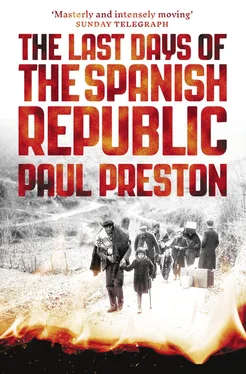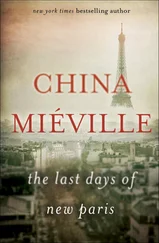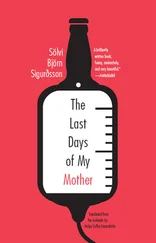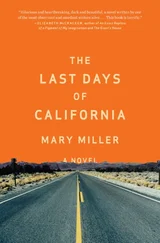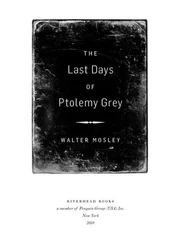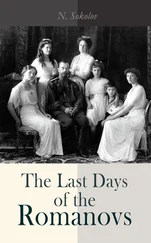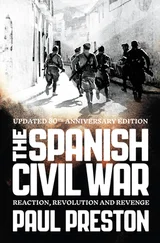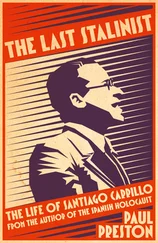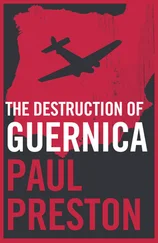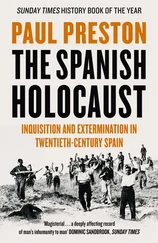On 7 October the Army of Africa resumed its march on a Madrid inundated with refugees and beset by major supply problems. In an effort to rally the population, on 4 November, Largo Caballero added two anarcho-syndicalist ministers to his cabinet in the hope of widening popular support for the beleaguered Republic. Franco’s delay permitted the morale of the defenders of Madrid to be boosted by the arrival in early November of aircraft and tanks from the Soviet Union together with the columns of volunteers known as the International Brigades. The siege of Madrid saw heroic efforts by the entire population. On 6 November, expecting the capital to fall quickly, the government fled to Valencia. The city was left in the hands of General José Miaja. Backed by the Communist-dominated Junta de Defensa, the unkempt Miaja rallied the population while his brilliant chief of staff, Colonel Vicente Rojo, organized the city’s forces. The first units of the International Brigades reached Madrid on 8 November, and consisted of German and Italian anti-fascists, plus some British, French and Polish left-wingers. Sprinkled among the Spanish defenders at the rate of one to four, the brigadiers both boosted their morale and trained them in the use of machine guns, in the conservation of ammunition and in the methods of using cover. They successfully resisted Franco’s African columns and, by late November, he had to acknowledge his failure. The besieged capital would hold out for another two and a half years until the fateful sequence of events triggered by Colonel Casado.
The arrival of Russian equipment and international volunteers in the autumn helped save Madrid. However, their presence was also to be used by Franco’s sympathizers to justify the intervention of Hitler and Mussolini and inhibit the Western powers. The motivation of both Germany and Italy was principally to undermine the Anglo-French hegemony in international relations, yet both dictators received a sympathetic ear in London when they claimed to be in Spain to combat bolshevism. Besieged, the Republic also had complex internal problems unknown in Franco’s brutally militarized zone. The collapse of the bourgeois state in the first days of the war had seen the rapid emergence of revolutionary organs of parallel power – the committees and militias linked to the left-wing unions and parties. A massive popular collectivization of agriculture and industry took place. Exhilarating to participants and foreign observers like George Orwell, the great collectivist experiments of the autumn of 1936 were an obstacle to the creation of a war machine. Opposing beliefs about whether to give priority to war or revolution would lie at the heart of the internal conflict that raged within the Republican zone until mid-1937. The Republican President, Manuel Azaña, and moderate Socialist leaders like the Minister of the Navy and Air Force, Indalecio Prieto, and the Minister of Finance, Juan Negrín, were convinced that a conventional state apparatus, with central control of the economy and the institutional instruments of mass mobilization, was essential for an efficacious war effort. The Communists and the Soviet advisers agreed – it made sense and they hoped that halting the revolutionary activities of Trotskyists and anarchists would reassure the bourgeois democracies being courted by the Soviet Union.
Preoccupied by internal dissensions, and still without a conventional army, the Republic was unable to capitalize on its victory at Madrid. Franco’s immediate response was a series of attempts to encircle the capital. At the battles of Boadilla (December 1936), Jarama (February 1937) and Guadalajara (March 1937), his forces were beaten back, but at enormous cost to the Republic. Concentration on the defence of Madrid meant the neglect of other fronts. Málaga in the south fell to newly arrived Italian troops at the beginning of February. The war in central Spain saw no easy victories. At Jarama, the rebel front advanced a few kilometres, but made no strategic gain. The Republicans lost 25,000 men, including some of the best British and American members of the Brigades, and the rebels about 20,000. In March, the rebels made further efforts to encircle Madrid by attacking near Guadalajara, 60 kilometres north-east of Madrid. An army of 50,000, the best-equipped and most heavily armed force yet seen in the war, broke through, but was defeated by a Republican counter-attack. Thereafter, as the Republic organized its People’s Army (Ejército Popular de la República), the conflict turned into a more conventional war of large-scale manoeuvre.
Even after being defeated at the battle of Guadalajara, in which a large contingent of Italian troops was involved, the rebels still held the initiative because each reverse for Franco saw the Axis dictators increase their support. This was demonstrated during the rebel campaign in northern Spain in the spring and summer of 1937. In March, Mola led 40,000 troops in an assault on the Basque Country backed by the terror-bombing expertise of the German Condor Legion. In a rehearsal for the Blitzkrieg eventually unleashed on Poland and France, Guernica was annihilated on 26 April 1937 to shatter Basque morale and undermine the defence of the capital, Bilbao, which fell on 19 June. Thereafter, the rebel army, amply supplied with Italian troops and equipment, was able to capture Santander on 26 August. Asturias was quickly overrun during September and October. Northern industry was now at the service of the rebels. This gave them a decisive advantage to add to their numerical superiority in terms of men, tanks and aeroplanes.
The defeats suffered by the Republic during early 1937 would lead eventually on 17 May to the establishment under the premiership of Juan Negrín of a strong government from which the anarcho-syndicalists were dropped. Already, as Minister of Finance and with the help of his under-secretary Francisco Méndez Aspe, Negrín had systematized the Republic’s exports of raw materials and its imports of weaponry and food. He had reorganized the Corps of Carabineros (border guards) to put a stop to smuggling and illegal exports. His contribution to the war effort cannot be exaggerated. 22Now, as Prime Minister, Negrín put his faith in the brilliant strategist Colonel Vicente Rojo, who tried to halt the rebels’ inexorable process by a series of diversionary offensives. At the village of Brunete, west of Madrid, on 6 July, 50,000 troops smashed through enemy lines, but the rebels had enough reinforcements to plug the gap. For ten days, in one of the bloodiest encounters of the war, the Republicans were pounded by air and artillery attacks. At enormous cost, the Republic slightly delayed the eventual collapse of the north. Brunete was razed to the ground. Then, in August, Rojo launched a bold pincer movement against Zaragoza. At the small town of Belchite in mid-September, the offensive ground to a halt. As at Brunete, the Republicans gained an initial advantage, but lacked sufficient force for the killer blow. In December, Rojo launched a further pre-emptive attack against Teruel, in the hope of diverting Franco’s latest assault on Madrid. The plan worked. In the most intense cold, the Republicans captured Teruel on 8 January 1938 – the only time that they managed to capture a provincial capital that had been in rebel hands. However, the triumph was short-lived. The Republican forces were dislodged after six weeks of heavy battering by artillery and bombers. After another costly defence of a small advance, the Republicans had to retreat on 21 February, when Teruel was on the point of being encircled. The casualties on both sides had been alarmingly high.
The Republicans were exhausted, short of guns and ammunition and demoralized after the defeat at Teruel. Franco now seized the initiative with a well-resourced offensive through Aragon and Castellon towards the sea. A total of 100,000 troops, 200 tanks and nearly 1,000 German and Italian aircraft began their advance on 7 March 1938. By early April, the rebels had reached Lérida and then moved down the Ebro valley, cutting off Catalonia from the rest of the Republic. By 15 April, they had reached the Mediterranean. In consequence, there was no shortage of senior figures on the Republican side who considered that the war could not now be won. Among them could be found both the chief of staff, Colonel Rojo, the head of the air force, Colonel Ignacio Hidalgo de Cisneros, and that eternal pessimist Indalecio Prieto. Negrín, however, refused to acknowledge the possibility because he was aware of the dangers of defeatism. 23He remained confident in continued Russian logistical support. However, Russian deliveries were few after June 1938. Already, by the late summer of 1937, attacks on neutral shipping by rebel warships and Italian submarines had closed the Mediterranean as a supply route for the Republic. Russian supplies now came from Murmansk or the Baltic ports and were unloaded in Le Havre or Cherbourg and then transported to the French–Spanish border. 24To get them across France, Negrín had to spend valuable foreign currency bribing local officials. As the the Minister of Agriculture, the senior Communist Vicente Uribe, later commented: ‘To get the necessary mechanisms working in France, it was necessary to grease them copiously, according to Negrín, with the funds of the Republic.’ 25In June 1938, the frontier was closed by the French Prime Minister Edouard Daladier and remained closed until late January 1939. The situation was most desperate in Catalonia, where the difficulties of supply of weaponry and food grew ever more acute. Daladier opened the frontier reluctantly only after Negrín told the recently appointed French Ambassador Jules Henry that Republican defeat in Catalonia and the arrival of German and Italian forces at the Pyrenees would constitute a threat to the security of France. 26
Читать дальше
